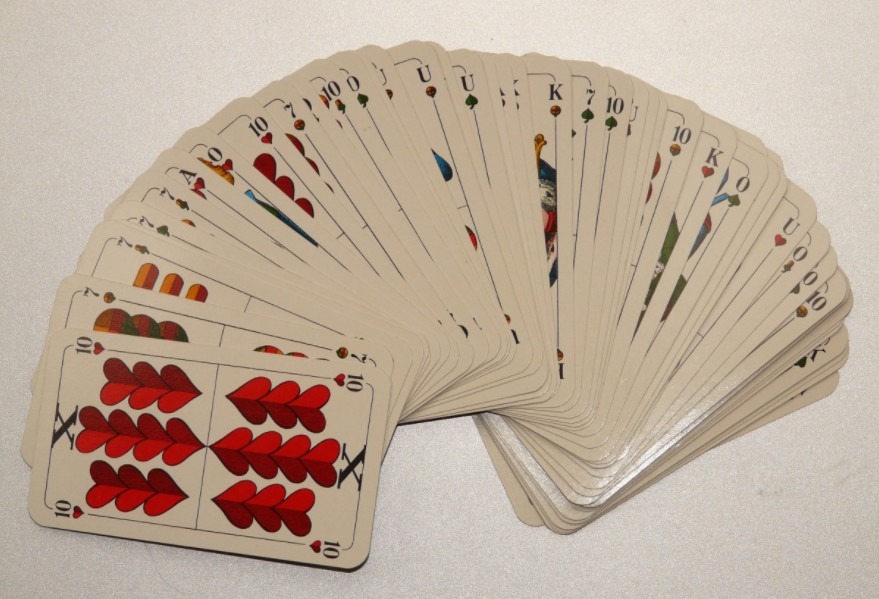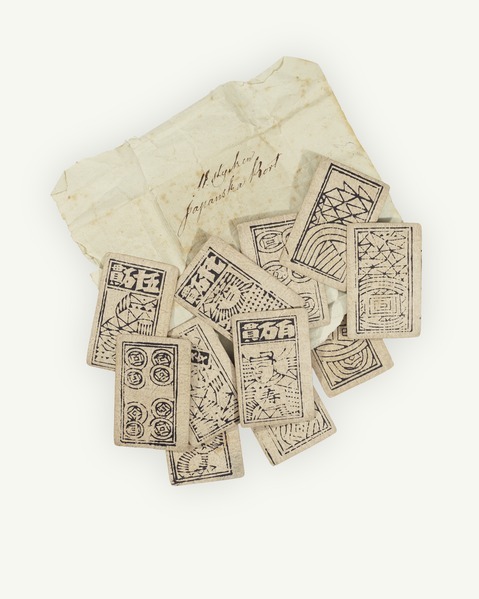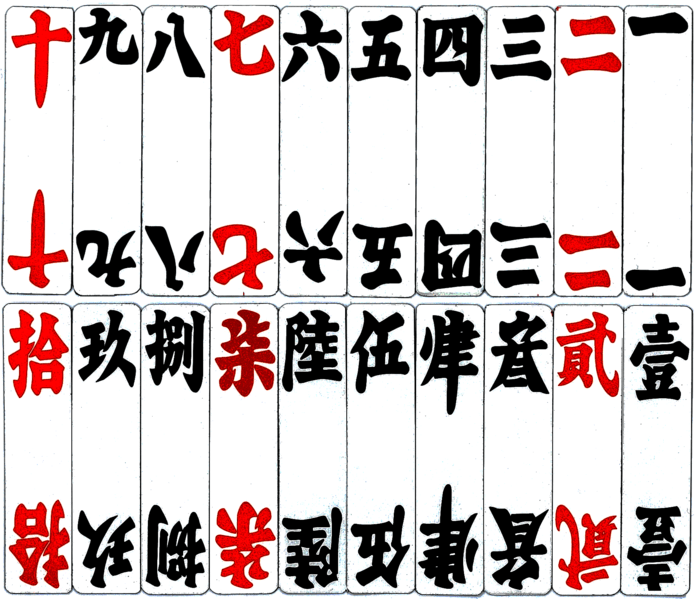What are Chinese Card Games?
The general population enjoys playing Chinese card games as a means of communication or as a kind of gambling. As early as the 13th century, it is said that playing cards first appeared in China. A more contemporary variation uses the 52 poker cards, although traditional China card games used unique cards based on the local currency at the time.
China is considered the country of origin of playing cards because the first record of cards comes from the 9th century from the territory of China. In the territory of Western civilization, they are mentioned in the middle of the 14th century and have been spreading around the world ever since.
Playing cards in paper form, in various variations of symbols and the size of decks, occupy the mind and imagination of both the ordinary world eager for entertainment, but also various mystics.
It is not known exactly when and where the playing cards originated, so many mystics attribute to them a magical and extraterrestrial origin, and even a demonic one.
China, however, is a country that is officially considered the cradle of card games. And indeed, today many card games are played most often in China, from where they are then transferred to the rest of the world. They are very popular and can be played online.
History
One of the first versions of card games used Chinese playing cards, and some academics believe that the history of Chinese card games is where modern components like suits and tricks initially appeared. The earliest cards were fashioned of wood or bone and were used to pass the time while drinking alcohol. These card games had straightforward rules that said the player who drew a marked card would lose.
The money-suited cards, which were created later and had 38 cards each, were based on the local currency at the time and were employed in trick games like modern Rummy. Chinese characters and well-known heroes from classical Chinese literature are two other card varieties.
Chinese card games have been converted to the current 52-card poker deck because of the rules’ simplicity. Further alterations make contemporary Chinese card games like DaLaoEr, which combines more western foundations like straights and Full Houses, intelligible and appealing around the globe. Of course, cards made of more contemporary materials, including synthetic plastic, are used in Chinese card games nowadays.
These are some of the most popular:
Dou Dizhu
In free translation from Chinese, the name of this game means fighting the landlord and has to do with the Chinese Communist Party and the 5o class workers’ struggle. In the 20th century, the younger generations do not view the game as epic and grandiose, but simply as an interesting game.
The game follows a pattern of three players and two jokers. Players bid for the position of the landlord. The losers in the auction are the “villagers” who are fighting the “landlords”. The object of the game is to leave the player without cards and he is the winner.
The game is played with 54 cards, each player receives 17 cards when dealt, while the remaining three are on the table in the middle. Then the bidding begins. Depending on the strength of the cards you received during the deal, you can place three types of bets, where the strongest is the third. It is somewhat similar to poker, but with specific strategic modifications.
Dao La Er
This card game is extremely popular throughout Asia, very competitive, and gambling. a special specificity is that card number 2 is the strongest, so when translated from Chinese to English this game is called Big two. It is played by hand in combinations of Pairs, Triple, Flushes, or Straight. They usually play two to four players with one deck, where each player gets 13 cards. Opponents can also be grouped in the mentioned formations, and the winner is the one who has clean hands first, i.e. the one who plays all the cards first.
Gong Zhu
Another classic Chinese game. The western version is the one in China. These games are Hearts. It is played with three or four players and as you can guess – it is very popular.
Unlike the western version, value points are added to the cards which are divided into categories of positive and negative points. The goal is to collect only positive points. The literal translation means to chase a pig.
The goal is not to be the first player to score 1000 points. Whoever “succeeds” is an automatic loser.
ShengJi
Sheng Ji is an old Chinese card game, which is characteristic of Chinese emigrants. There are no go variations that vary from region to region. The game is based on the so-called dynamic trump card, i.e. on the cards that are the trump cards of each round separately. The game can be played with one or more decks.
The most common variation is bashi fen (eng. eighty points) and it’s played with two decks and two jokers. The game can be played by 4 players in a formation of partnerships, where the players sit opposite each other. Teams are divided into attackers and defenders, and which player, ie. which partnership belongs to which type, depends on that game and can change.
The goal of the game is to bring the team into a position above the ace while preventing the opposing team from doing the same. When the team succeeds, it mostly wins. This game can be played for hours.
Four color cards
Four color cards are the game which belongs to the rummy family of card games and is also a traditional Chinese game, although variations are popular in Vietnam as well. And this game also has an interesting social history.
It was created at the end of the 19th century, that is, the game was known before, but the deck for exclusively this version was created in the 19th century. It is characterized by the lower and very poor strata of the population and since gambling was banned in China at the time, it was important to find a wise way to pass the decks. That is why many variations of this game are known.
The usual deck has 112 cards, divided into 4 colors of 28 cards each. They show seven Chinese chess pieces. This game is very similar to Mahjong, where the main difference is that tiles are used in Mahjong. Neal Taparia, the owner and creative manager of Mahjong Challenge was inspired by this game while he was creating his platform.
The usual deck has 112 cards, divided into 4 colors of 28 cards each. They show seven Chinese chess pieces. This game is very similar to Mahjong, where the main difference is that tiles are used in Mahjong. And the goal of the game is also similar to Mahjong, ie to achieve the winning hand of 21 cards. The winning hand must have an odd number of points.
The usual version is played with four players and 112 cards, although it can be added to each new player with more players from the team, he adds 28 cards.
Gou Ji
Gou Ji, a six-player card game with four packs of cards, is well-liked in China. The object of the game is to score points for your team while cleaning your hand. Players from the two teams alternately sit down, and cards are played using combinations that resemble the Full House set from the west. Others provide values that are higher. To achieve “Gou Ji,” one must defeat their competitors with a large enough value.
Chinese Blackjack
In South East Asia, the Chinese blackjack variant is well-liked. Chinese Blackjack differs from casino blackjack in that the dealer takes a more active role, choosing which cards from each player’s hand to show. The minimal threshold is one example of a house rule that is frequently used. Nevertheless, reaching 21 points without exceeding continues to be the objective.
Chinese Poker
Chinese poker is a card game that differs significantly from poker players in the west. Each of the four players is dealt 13 cards, which they must divide into three poker hands, each consisting of three, five, and five cards. Then, points are given according to the particular combinations. Some people find the additional ability of control to be incredibly alluring despite the layer of luck.
Mhajong
Four players participate in the Chinese tile-based game known as mahjong. It is frequently played in social settings, such as family gatherings or festivals, and requires ability, strategy, and luck. In China, the game of mahjong is very well-liked and includes regional variations.
San Guo Sha
San Guo Sha, sometimes referred to as “Three Kingdoms Kill” or “Three Kingdoms Card Game,” is a well-liked strategy card game in China that is based on the actual events of the Three Kingdoms era of Chinese history. Players utilize a deck of cards that depicts different people from the Three Kingdoms period to engage in battles and form alliances to overcome rivals and accomplish their goals.
Why Do They Play Chinese Cards?
- Cultural heritage – Mahjong is one of the many Chinese card games that have a lengthy history and are engrained in Chinese culture. As a means of preserving cultural history and upholding family traditions, they are frequently passed down through generations and performed at family get-togethers, festivals, and other social events.
- Socializations – Chinese card games are frequently played in social settings. They give family and friends a chance to get together, talk, and connect around a common experience. In China, playing card games is frequently viewed as a technique to develop interpersonal bonds, reinforce social ties, and promote camaraderie among participants.
- Entertainment – Playing card games is a kind of entertainment in China, just like it is in many other civilizations. It offers a means of recreation and relaxation, enabling gamers to unwind, have fun, and kill time in an interesting and entertaining way. In clubs or tournaments, card games are frequently played as a sort of recreational activity, either informally among friends or more competitively.
- Skills and strategy – Players who love intellectual challenges may find the ability, strategy, and mental agility required by many Chinese card games to be interesting. These games frequently require intricate rules, card combinations, and decision-making, which can be mentally stimulating and provide players a sense of accomplishment when they utilize their strategy successfully.
- Gambling – Chinese card games like Big Two and Fight the Landlord are frequently played for minor sums or as a sort of friendly gambling. Gambling has long been a popular pastime in China. Card games can become more exciting and competitive for certain players when gambling is involved since it can bring a sense of risk and excitement to the gameplay.
- Mental stimulation – Playing card games can enhance memory, focus, and strategic thinking while also stimulating the mind and promoting cognitive benefits. The application of critical thinking, memory, and decision-making skills is required in many Chinese card games, which can be advantageous for cognitive growth, especially in older adults.
CONCLUSION
As you can conclude, China is a specific country that, among other things, has a long history of card games. Many of these that we have listed, as well as others, are intertwined in rules and strategies. Some are mentally demanding, some are just fun. You don’t have to go to China and look for every specific deck of cards, but you can experience their mystique and passion through many online game platforms.



